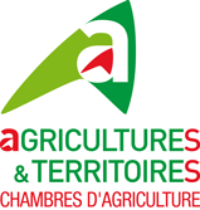Document type: Article published on the Radio-Canada website
Author: Catherine Mercier
Preview: Why is it standard practice in the dairy industry to separate calves from cows? Separating calves makes sense for a dairy farmer. Where does his salary come from? From the milk he sells. So the idea is that you harvest the milk and then sell it. A suckled calf will drink 8 to 10 liters of milk per day; for the farmer, this represents an immediate economic loss, because this fresh milk is worth more than the milk powder normally given to calves. But beyond the financial considerations, there is the ethical aspect.
Europe is pushing the discussion forward
In several European countries, a reflection on the way to raise dairy calves is already underway. It comes from consumers, but also from farmers. The country that is leading the way in this area is Germany. There, several certifications already exist with logos that clearly identify dairy products from farms where calves are no longer separated from cows.
The German retail giant Lidl has even recently joined forces with large traditional dairy farmers who have adopted this new way of raising calves.
Kerstin Barth is a researcher at the Thünen Institute, a research center for organic agriculture in northern Germany. She has been studying cow-calf separation for almost 20 years and has seen a growing interest in this method of rearing.
"A lot of farmers who are not organic are calling me because they are starting to think about this system and would like to move in that direction," she says. [...While keeping calves with their mothers may seem like a natural fit, there are no instructions. So farmers who decide to end early separation are sailing blind. Corné Ansem, a dairy farmer in the south of the Netherlands, learned this the hard way.
Since 2007, he no longer separates calves from their mothers at birth, but what started out as a good idea turned out to be more complicated than expected [...] Now, after much trial and error, he keeps them together for three months and the separation is done in stages. For a week, the calves are placed in a special pen and can still suckle the mother through a barrier. "After a week, another barrier is added, and the calves can no longer drink, but they can still see their mother and smell her. It's a gradual separation."
Other producers are using anti-sucking rings, a Canadian invention first developed for the beef industry. These rings, which prevent the action of suckling, allow calves to remain within the herd and not be physically separated from their mothers, thus reducing stress.
Looking for answers
Unlike Canada, research on cow-calf contact systems is well underway in several European countries. Researcher Sigrid Agenas of the Swedish Agricultural University is currently conducting a large research project on the integration of calves into automated milking systems. The goal is to evaluate, among other things, the impacts on milk yield, cow and heifer health and long-term fertility. [One of the issues that farmers and researchers are grappling with is the ideal duration of mother-calf contact. Sigrid Agenas has been studying cohorts of calves that spend four months with their mothers since 2019. "This system inspired by a Scottish commercial farm works well," she says. But to get to the point of determining the ideal age of separation, she kept a group of calves with their mothers for the first time this summer for... eight months! "If consumers reject early separation, they are likely to ask, "Why four months?" So we want to validate different hypotheses."






